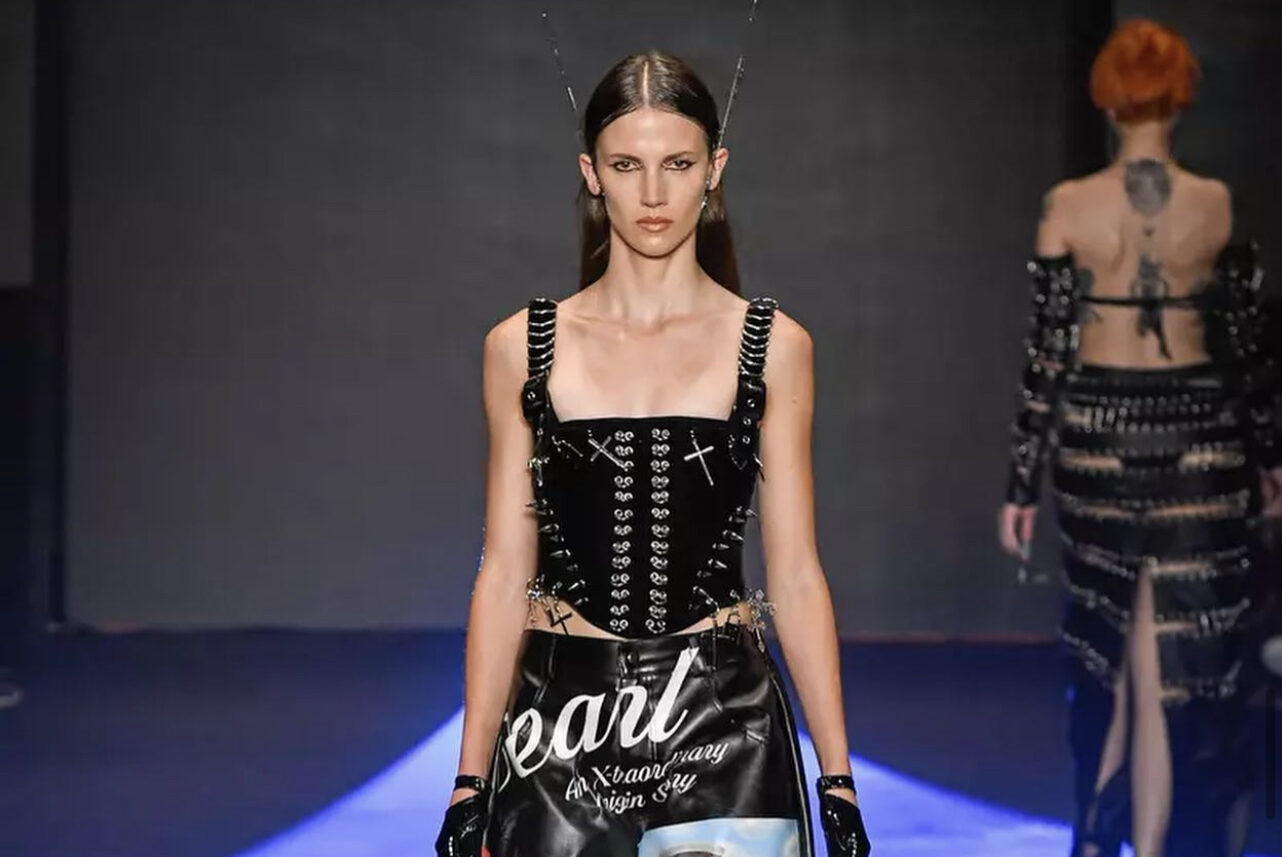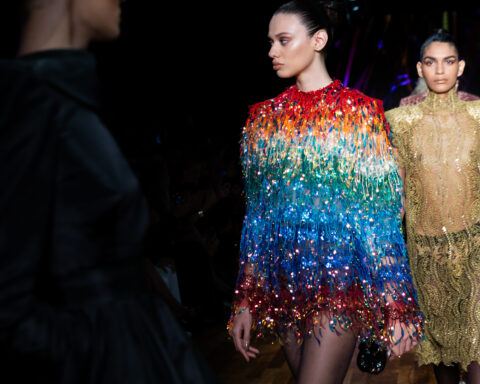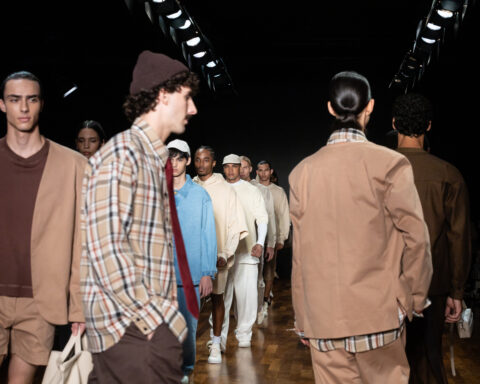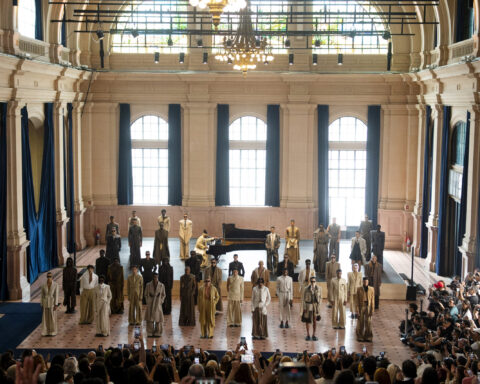Artemisi
Mayari Jubini, the designer behind Artemisi, hailing from Espírito Santo, Brazil, and renowned in the national fashion industry, debuted at São Paulo Fashion Week (SPFW). She dressed celebrities like Julia Fox, Dulce Maria, and Demi Lovato, presenting a collection that fused advanced technology, such as 3D printing, with film-inspired prints like the iconic “Carrie” and “Pearl” pants, and meticulous handcrafting.
In an August 2022 interview with Marie Claire Brazil, Mayari highlighted her passion for innovation and her ambition to lead in fashion. Starting as a saleswoman at 17, her curiosity propelled her into the glamorous fashion world, culminating in the “Réquiem For The Time” show. This 24-look collection featured a palette of black, off-white, wine, gold, and silver, exploring fetishism, brutalism, and sci-fi, with Artemisi dominating the runway in a disruptive, unique manner.
Sau Swim
Yasmin Nobre, the mind behind the renowned beachwear brand Sau from Ceará, and her partner Marina Bitu, shared the inspiration behind the brand’s 2021 launch. Their shared desire to enhance femininity and confidence by the sea sparked this venture. The ocean, a refuge for both, inspired them to create garments blending design and functionality, enhancing the escape from daily life.
Yasmin emphasized that the sea and femininity have always been central to Sau’s creative inspiration. Recognizing women’s diverse ocean relationships, Sau celebrates this diversity. The brand’s pieces, in sophisticated shades of black, white, and red, capture summer essence, with geometric details reflecting craftsmanship and the natural landscapes of Brazil’s Northeast.
João Pimenta
João Pimenta’s São Paulo Fashion Week show featured gold as a central element, notably in striking chalk stripe suits. He intertwined the attire of Our Lady of Aparecida with that of Oxum in Brazilian culture, reinterpreting ritualistic costume codes with his expert tailoring. This approach allowed him to challenge conventions uniquely.
His black and white shirts, parkas, and pants, made of satin, shone symbolically. The volumes on the hips, created through meticulous modeling and material layering, showcased his unique personality.
Depedro
Depedro paid homage to Brazilian craftsmanship, with artisans working live during the show, emphasizing the handcrafted nature and Brazilian essence of the clothes. Transitioning from streetwear to resort style, Depedro’s pieces, rich in details like fuxicos, manual weaves, fringes, patchwork, and handcraft techniques, reflected the Brazilian coast and hinterland’s influence. The brand’s identity shone through the use of stripes and a warm and cool color palette, invoking a sense of regionalism and ancestry.
Helô Rocha
Helô Rocha’s fashion show was a true representation of her style, merging her Rio Grande do Norte roots with craftsmanship and a theatrical fashion approach. The models, evoking characters from Guimarães Rosa’s tales, seemed to emerge from mangrove waters. The color palette ranged from white, black, to earthy tones, showcasing Helô’s studio’s versatility. Key elements included party and wedding dresses, corsets, open skirts, and materials like tulle, fishing nets, embroidered lace, metals, and sculpted latex, highlighting her exceptional design talent.






